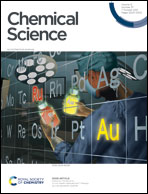Theoretically probing the possible degradation mechanisms of an FeNC catalyst during the oxygen reduction reaction†
Abstract
For the FeNC catalyst widely used in the oxygen reduction reaction (ORR), its instability under fuel cell (FC) operating conditions has become the biggest obstacle during its practical application. The complexity of the degradation process of the FeNC catalyst in FCs poses a huge challenge when it comes to revealing the underlying degradation mechanism that directly leads to the decay in ORR activity. Herein, using density functional theory (DFT) and ab initio molecular dynamics (AIMD) approaches and the FeN4 moiety as an active site, we find that during catalyzing the ORR, Fe site oxidation in the form of *Fe(OH)2, in which 2OH* species are adsorbed on Fe on the same side of the FeN4 plane, results in the successive protonation of N and then permanent damage to the FeN4 moiety, which causes the leaching of the Fe site in the form of Fe(OH)2 species and a sharp irreversible decline in the ORR activity. However, other types of OH* adsorption on Fe in the form of HO*FeOH and *FeOH intermediates cannot cause the protonation of N or any breaking of Fe–N bonds in the FeN4 moiety, only inducing the blocking of the Fe site. Meanwhile, based on the competitive relationship between catalyzing the ORR and Fe site oxidation, we propose a trade-off potential (URHETMOR) to describe the anti-oxidation abilities of the TM site in the TMNX moiety during the ORR.



 Please wait while we load your content...
Please wait while we load your content...